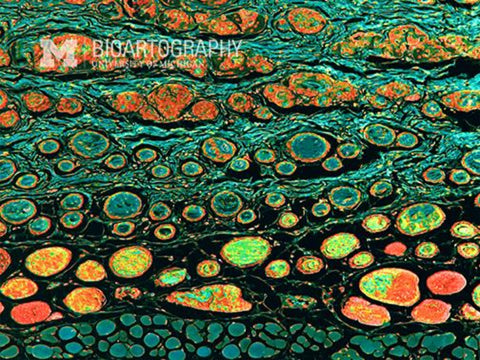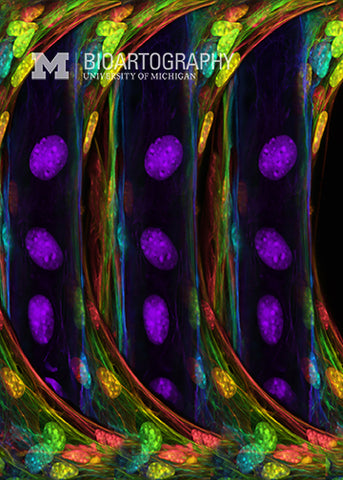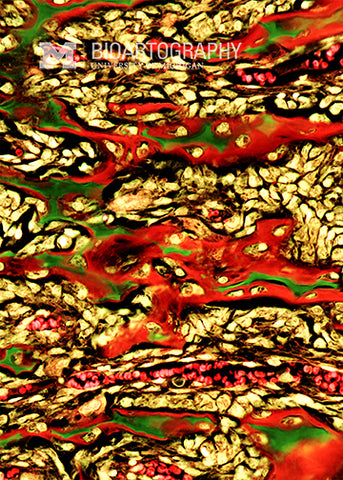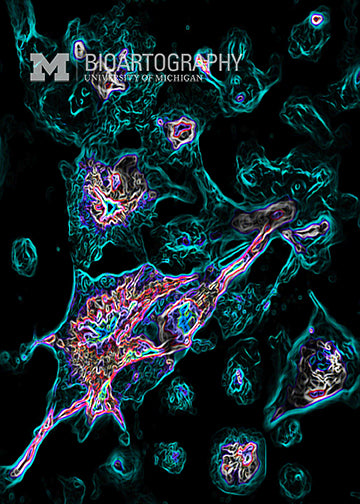
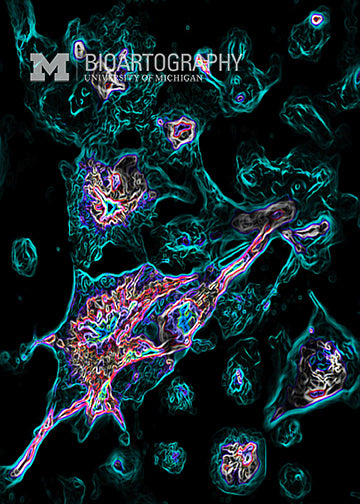
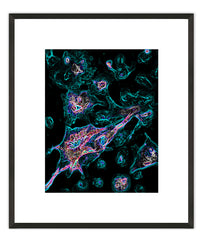
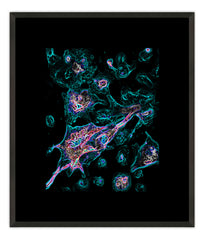
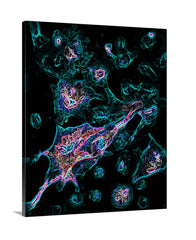
Sarah Kearns, Graduate Student, Chemical Biology (Cianfrocco and Verhey Laboratories), Life Sciences Institute and Department of Cell and Developmental Biology, University of Michigan
Like human cities and towns, which have sidewalks for humans and roads for vehicles, cells use different kinds of tracks for particular types of transport. Here we see one such network, called the microtubular network, the cell’s molecular highway. As the saying goes, “all roads lead to Rome,” and microtubule highways are no different; their central hub or organizing center is located towards the middle of a cell near the nucleus. Cargo-carrying motor proteins travel on these molecular roads to bring their freight to different parts of the cell, following organized chemical and protein-based traffic signs that decorate the microtubules. Just as in rush hour, these highways are heavily used by motor proteins traveling to and from the organizing center. They are also constantly under construction, growing and shrinking as needed. Watching this frenzied movement, the goal is to decipher the dynamics of microtubules and explore how the traffic signs bring some order out of this chaos.
20-101

